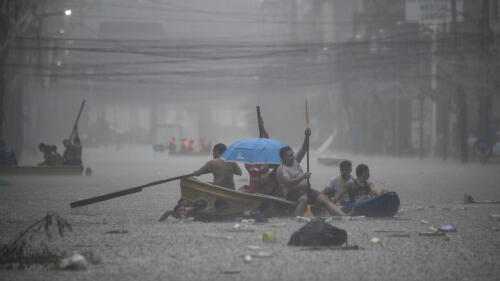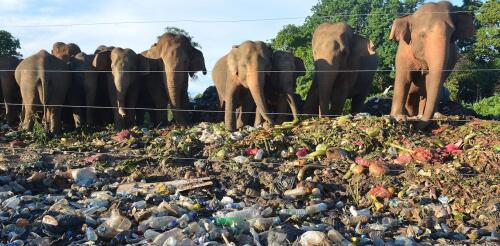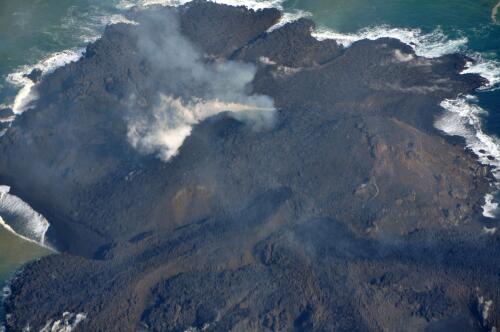Asia
Relentless rain drenched the northern Philippines on Wednesday (Jul 24), triggering floods in Manila and deadly landslides as Typhoon Gaemi intensified the seasonal monsoon. Rescuers were deployed across the densely populated capital to help evacuate people from low-lying homes after downpours turned streets into rivers, trapping vehicles. People clutched flimsy umbrellas as they waded through thigh-deep murky water or used small boats and shopping trolleys to move around. “The disturbance it caused is great. The waters reached the second floor of our house,” Nora Clet, a resident, told AFP. Restaurant employee Rex Morano said he was not able to work due to the “very high” floodwaters. A state of calamity was declared for Manila, unlocking funds for relief efforts, after the state weather forecaster warned of “serious flooding” in some areas. Government offices were shut and classes suspended, more than 10...
China has unveiled an action plan on the green development of data centers, specifying a set of targets to accelerate the low-carbon transition of the sector. By 2025, the average power usage effectiveness (PUE) of data centers, a metric for energy efficiency, will be lowered to less than 1.5, according to the plan jointly issued on Tuesday by the National Development and Reform Commission, the Ministry of Industry and Information Technology and two central government agencies. The plan also aims to increase the utilization rate of renewable energy in data centers by 10 percent annually. As an important infrastructure for development of new quality productive forces, data centers are among the sectors where energy use grow rapidly in China. It is expected that data centers’ power usage in the country will climb by 15 percent annually. The action plan proposed that by the end of 2030, data centers across the country will see their average PUE, and ener...
Despite their iconic status and long association with humans, Asian elephants are one of the most endangered large mammals. Believed to number between 45,000 and 50,000 individuals worldwide, they are at risk throughout Asia due to human activities such as deforestation, mining, dam building and road construction, which have damaged numerous ecosystems. My colleagues and I wanted to know when human actions started to fragment wildlife habitats and populations to the degree seen today. We quantified these impacts by considering them through the needs of this species. In a newly published study, we examined the centuries-long history of Asian landscapes that once were suitable elephant habitat and often were managed by local communities prior to the colonial era. In our view, understanding this history and restoring some of these relationships may be the key to living with elephants and other large wild animals in the future. Although e...
The weekly round-up on the climate crisis and data on carbon dioxide levels in the atmosphere. More and more often, after news of fires, hurricanes, heat waves, floods, storms, droughts, we hear that we need to start getting used to what could soon be "the new normal".If we do nothing, what seems like an exception today will become the norm.Yet talking about a "new normality" suggests that what we are witnessing is an irreversible, slow, linear and, in some ways, natural and foreign to us process.But that's not the case. “This is not the new 'normal' and the climate is not just changing, it is destabilizing,” writes Greta Thunberg in her latest book “The Climate Book” (out November 1st) and of which the Guardian he published some extracts.“Until now, Earth's natural systems have acted as a shock absorber, dampening the dramatic transformations underway.But the planetary resilience that has been so vital to us will not las...
Ten years after a new islet born in a massive eruption nearby swallowed it, remote Nishinoshima island in the Ogasawara island chain is still showing signs of volcanic activity. A survey from an Asahi Shimbun aircraft on Nov. 3 confirmed white fumarolic gas rising from a central crater and the slopes and surrounding sea areas turned brown and green. The activity puts the island’s recovering ecosystem at risk, which has seen a decrease in the number of seabirds. In the Ogasawara island chain, eruptions have occurred at Fukutoku-Okanoba, an undersea volcano, and Iwoto, a volcanic island. “The entire Ogasawara island chain is now in a period of very active volcanic activity,” said Setsuya Nakada, a volcanic geologist and professor emeritus at the University of Tokyo, who was aboard the aircraft. On Nov. 20, 2013, an eruption occurred on the seafloor near Nishinoshima, about 1,000 kilometers south of Tokyo, creating a n...




